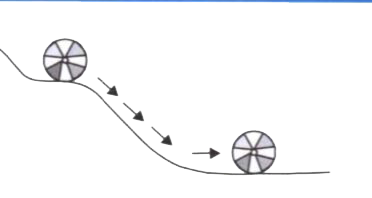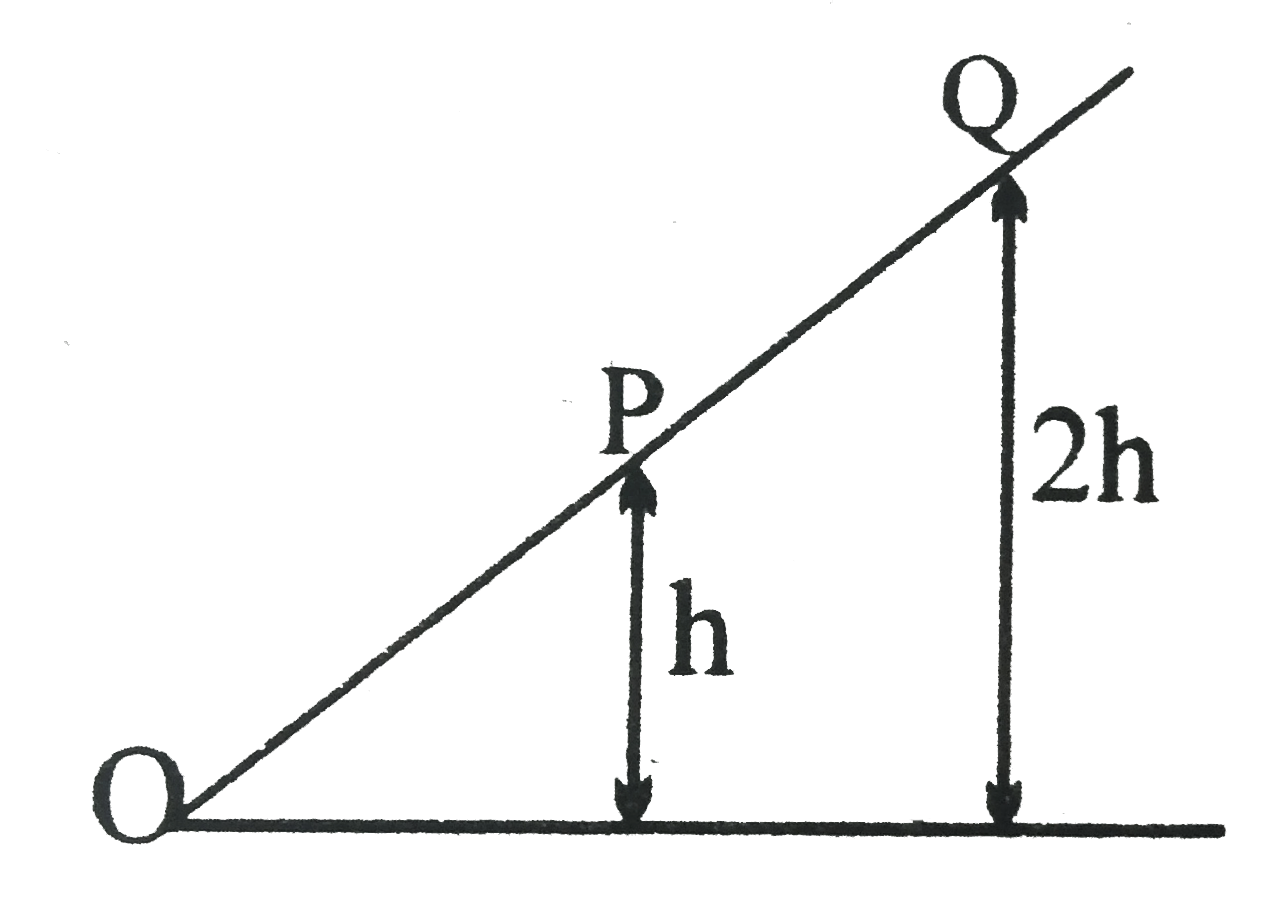The given diagram shows a ball rolling down a slope. The ball finally comes to a stop by itself. Which of the following statements describes what most likely caused the ball to stop?

A
The heat produced as a result of its motion.
B
The speed produced as a result of its motion.
C
The friction between the ball and the surface.
D
The energy produced as a result of its motion.
Text Solution
The correct Answer is:C
Frictional force is the opposing force acting in case of moving ball. This cause, the ball to stop after a while.
|
Topper's Solved these Questions
- FRICTION BOOK - MTG IIT JEE FOUNDATIONCHAPTER - FRICTION EXERCISE - EXERCISE (Integer/Numerical Value Type))
2 Videos
- FORCE AND PRESSURE BOOK - MTG IIT JEE FOUNDATIONCHAPTER - FORCE AND PRESSURE EXERCISE - OLYMPIAD/HOTS CORNER
15 Videos
- LIGHT BOOK - MTG IIT JEE FOUNDATIONCHAPTER - LIGHT EXERCISE - Olympiad/HOTS Corner
20 Videos
Similar Questions
Knowledge Check
A ball rolls down an inclined plane, figure. The ball is first released from rest from P and then later from Q.
Which of the following statement is//are correct ?
 .
.
(i) The ball takes twice as much time to roll from Q to O as it does to roll from P to O.
(ii) The acceleration of the ball at Q is twice as large as the acceleration at P.
(iii) The ball has twice as much K.E at O when rolling from Q as it does when rolling from P.A(i), (ii) onlyB(ii), (iii) onlyC(i) onlyD(iii) onlyA rigid ball rolls without slipping on a surface shown below.

Which one of the following is the most likely representation of the distance traveled by the ball vs time graph?A B
B C
C D
D
A ball rolls down an inclined plane and acquires a velocity vr when it reaches the bottom of the plane. If the same ball slides without friction and acquires rolling from the same height down an equally inclined smooth plane and acquires a velocity vs (then which of the following statements are not correct?
Avr<vs because a work is done by the rolling ball against the frictional force.Bvr>vs, because the angular velocity acquired makes the rolling ball to travel fasterCvr=vs because kinetic energy of the two balls is same at the bottom of the planes.Dvr>vs because the rolling ball acquires rotational as well as translational kinetic energy.
Why a roling ball stops after some time? What happens to its cause when it completely stops?
View SolutionWhich type of motion is described by rolling ball ?
View SolutionWhat energy transformation takes place when a ball rolls down a hill?
View SolutionName the unbalanced force that stops a ball rolling on the ground.
View SolutionA uniform solid ball rolls down a slope. If the ball has a diameter.of 0.5 (m) and a mass of 0.1 (kg). The coefficient of friction between the ball and the slope is 0.29. The maximum angle of inclination (in degree) for which the ball roll is (approx.)
View Solution
